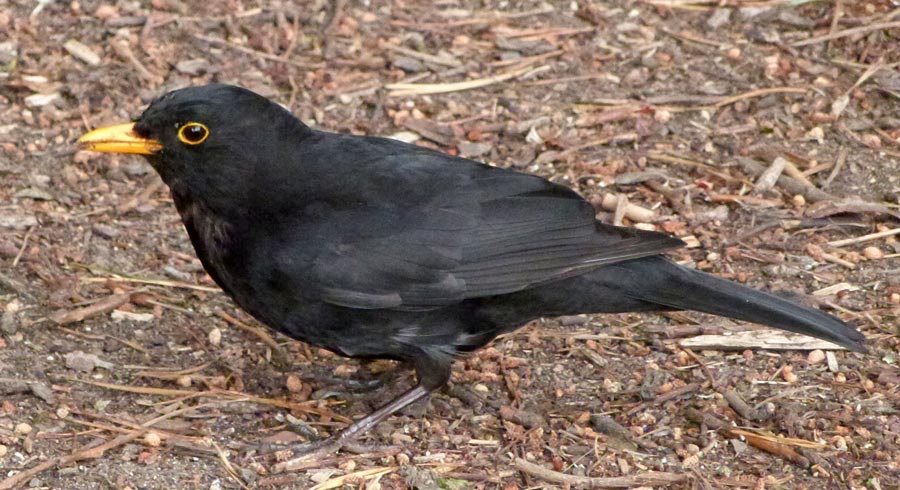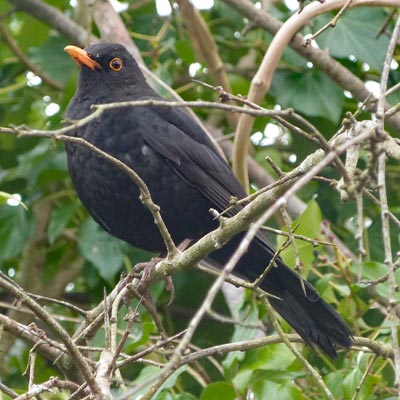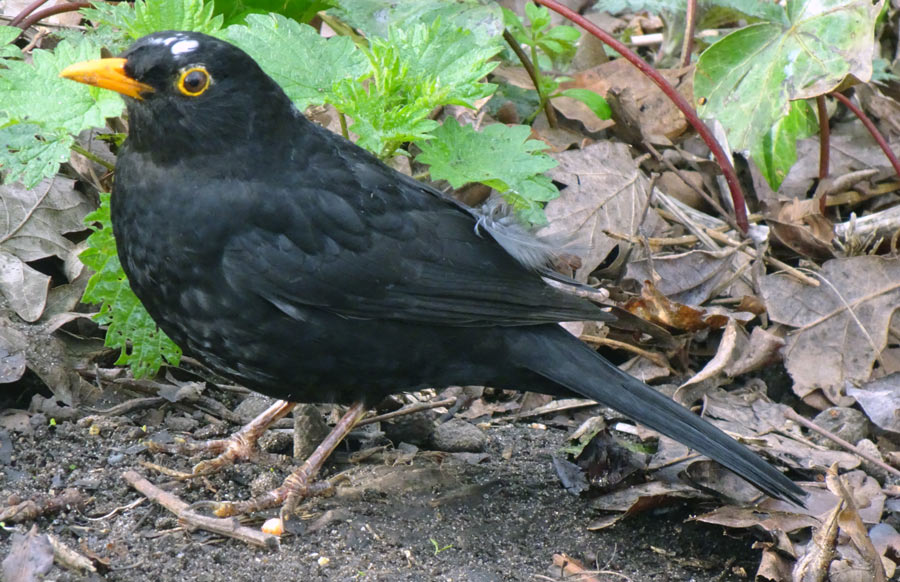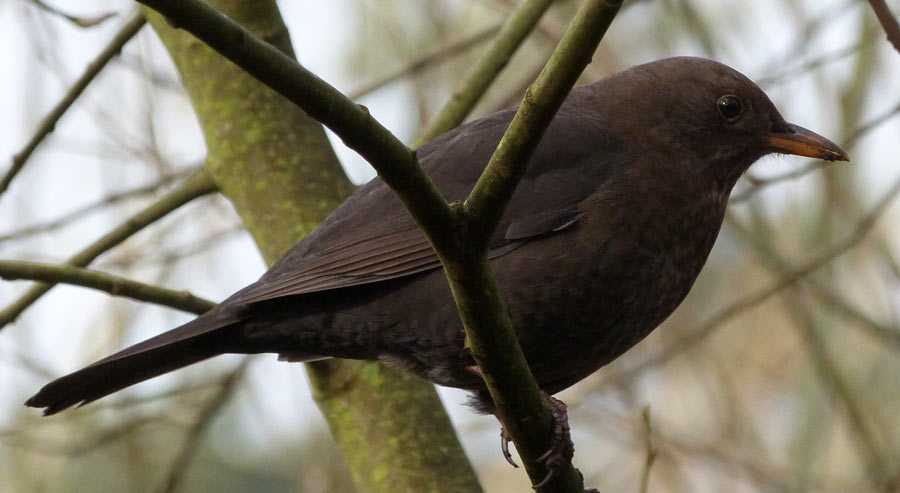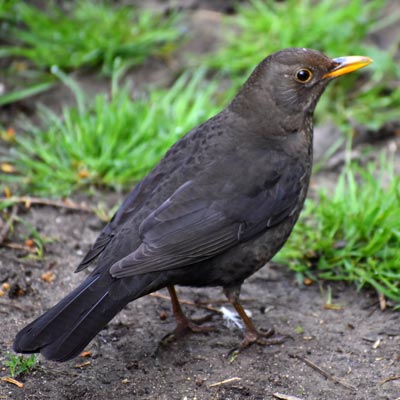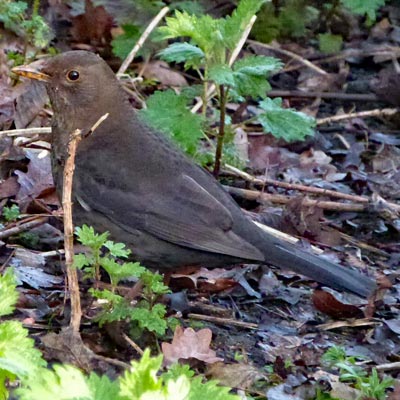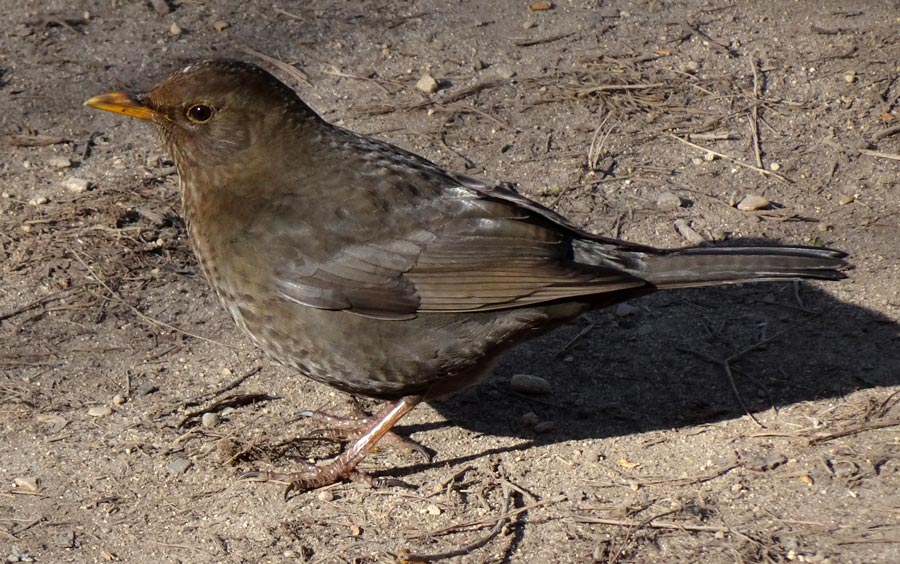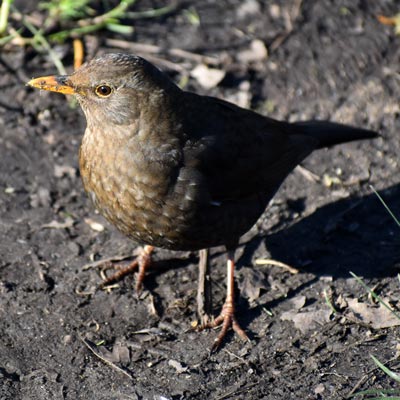Male blackbirds establish a territory during their first year, which they will hold throughout their lives. The territory is essential for pair formation and nesting, although only a part of the food is obtained from within it.
Blackbirds rear 2-3 broods. In a good year, fourth broods may be attempted. Weather determines the timing of the breeding season.
Warm or cold spells in spring can bring the breeding season forward or delay it by several days. Dry weather in June can shorten the season and even cause starvation of late broods. The nesting season starts up to two weeks earlier in gardens than in woodland.
The nest, built by the female, is low down in any suitable cover. Trees, shrubs and climbers are preferred, but nests can be found inside buildings, occasionally even on the ground. |
|
The nest is a substantial cup of grass, straw, small twigs and other plant material. It is plastered inside with mud and lined with fine grass. It can take two weeks to complete, and sometimes the same nest is used for successive broods.
The oldest known wild individual was 21 years and 1 month. Mortality is high especially during the breeding season - more than half of all deaths occur between March and June.
The population trend for the blackbird shows a sustained period of decline from the 1970s to the mid-1990s, followed by a period of recovery, with a 26 per cent increase recorded by the Breeding Bird Survey between 1995 and 2008.
Gardeners can help blackbirds by avoiding the use of garden chemicals, and by planting shrubs that provide blackbirds with caterpillars, berries, or both. |
